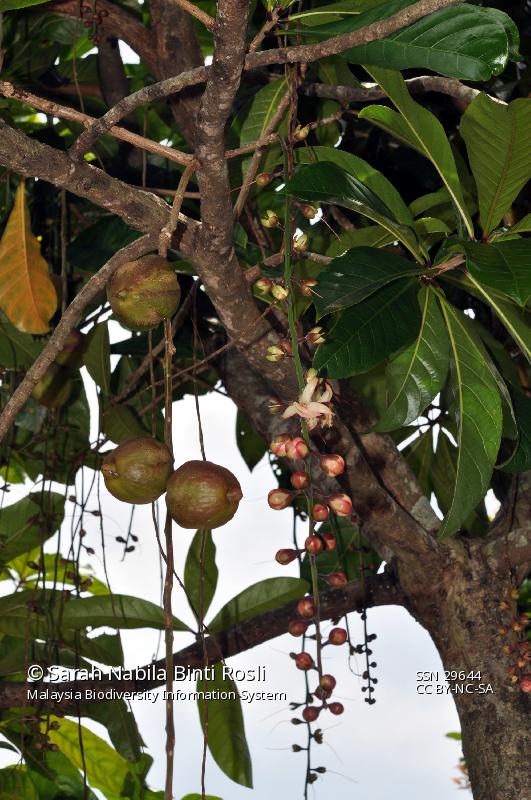
Barringtonia racemosa is a common shrub to medium-sized tree commonly known as putat ayam or putat kampung. The genus name, Barringtonia, commemorates Daines Barrington, who was a nobleman, lawyer, and also a naturalist who wrote a book on English trees (Nicholson, 1991). The epithet, racemosa, refers to the unbranched and continuous inflorescences. This genus is also distinguished by the absence of stipules and by its large berry fruit. Another characteristic of this genus is the arrangement of the leaves, which are whorled or clustered at the end of the branches.
It is distributed from Africa through the Pacific islands including the Solomons, Fiji and Samoa, Asia including India, Sri Lanka, Myanmar, Thailand, China, Malesia, to Australia. It is widely distributed in the Philipppines, Peninsular Malaysia and Borneo. It favours open areas with high humidity, for example, along river banks, or coastal areas. This species is the most widespread genus of Barringtonia and is considered of Least Concern (LC), conservation-wise (Prance, 2012).
The Lecythidaceae family is known for the large size of its flowers with a large number of stamens. Barringtonia is recognized by having attractive and long inflorescences, which can reach up to 100 cm and give the plant a most unique appearance. The flowers are white to pale pinkish and strongly scented. They bloom at night but survive for only one night. Bats are important pollinators for this species.
Most parts of the tree contain saponins which are naturally occurring plant glycosides that are poisonous. The seed is usually used medicinally for various ailments and diseases since it contains the highest concentration of glycosides. The extract of all parts of the plant may be used as an insecticide. In the Philippines, the fruit is used to poison wild pigs (Burkill, 1966). However, the young leaves are not poisonous, and the local Kelantanese eat it as a vegetable or ulam. In the past, the tannin yielded from the bark was used as a natural red dye to colour leather goods (Burkill, 1930).
